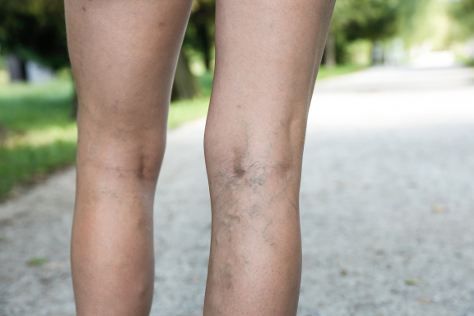What are varicose veins?
Varicose veins are a very common problem, affecting around 30% of adults. They develop when the small valves inside the veins stop working efficiently
What are Varicose veins
Varicose veins are prominent, enlarged veins, usually in the lower legs. They can be unsightly and uncomfortable, and are particularly common in expectant mums because of the increased blood volume in pregnancy and hormonal changes that make the circulation sluggish.
 Varicose veins are a very common problem, affecting around 30% of adults, with women more likely to suffer than men. People most at risk, as well as mums-to-be, include the elderly, because ageing veins can become lax and the valves less efficient; people who are overweight, as there's extra pressure on the blood vessels; and people with a family history of varicose veins.
Varicose veins are a very common problem, affecting around 30% of adults, with women more likely to suffer than men. People most at risk, as well as mums-to-be, include the elderly, because ageing veins can become lax and the valves less efficient; people who are overweight, as there's extra pressure on the blood vessels; and people with a family history of varicose veins.
Varicose veins develop when the small valves inside the veins stop working efficiently. Instead of the valves opening and closing to let blood flow back to the heart, blood can be allowed to flow backwards and pool in the veins, making them varicose.
Diagnosis is usually made by appearance alone, but if your GP suspects something structurally wrong with your blood vessels or is concerned that there may be a clot, you may be sent for an ultrasound scan.
What are the symptoms of Varicose veins?
Varicose veins can either appear to be twisted, lumpy or swollen, and are usually purple or blue in colour. They're mostly symptomless, apart from their appearance, but in some people they can cause pain, itching, a feeling of heaviness in the legs and localised swelling. Rarely, varicose veins can lead to leg ulcers.
What are the treatments and remedies of Varicose veins?
In most people, varicose veins don't need any treatment, although because of their unsightly appearance some people choose to pay to undergo a surgical procedure.
If they're painful or likely to lead to complications such as leg ulcers, NHS treatment will usually be offered.
Treatment options range from wearing compression stockings, which squeeze the blood vessels and improve circulation, to sclerotherapy, which involves injecting the veins to form scar tissue, which seals them off, or surgery to remove the affected veins altogether.
There are more sophisticated procedures available, but these are rarely offered on the NHS.
This guide
The information in this Bounty A-Z of Family Health is not a substitute for an examination, diagnosis or treatment by a doctor, midwife, health visitor or any other qualified health professional. If in doubt, always speak to a doctor.
Bounty will not be held responsible or liable for any injury, loss, damage, or illness, however this occurs or appears, after using the information given on this website and in particular the A-Z of Family Health.
Further help
For health advice and information 24 hours a day, 365 days a year, the NHS offers call and web services. You can also visit NHS websites for services, health information and health news at nhs.uk
- England – call 111 from any landline or mobile phone free of charge, or visit nhs.uk
- Scotland – call 111 from any landline or mobile phone free of charge, or visit nhs24.com
- Wales – call 0845 4647 , or visit nhsdirect.wales.nhs.uk
- Northern Ireland – visit hscni.net